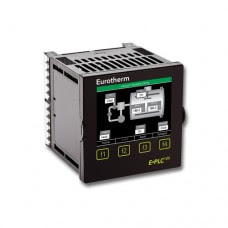 |
The Model G5 can process signals from mulitple
load cells
Courtesy BLH/Nobel |
In industrial application of process measurement and control, principles of the physical sciences are combined with technology and engineering to create devices essential to modern high speed, high accuracy system operation. Years of research, development, and the forward march of humanity’s quest for scientific knowledge and understanding yields packaged devices for process measurement that are easily applied by system designer and operators.
Load cells are the key components applied to weighing component or processed materials in modern industrial operations. Load cells are utilized throughout many industries related to process management, or just simple weighing operations. In application, a load cell can be adapted for measurement of items from the very small to the very large.
In essence, a
load cell is a measurement tool which functions as a transducer, predictably converting force into a unit of measurable electrical output. While many types of load cells are available, one popular cell in multiple industries is a strain gauge based cell. Strain gauge cells typically function with an accuracy range between 0.03% and 0.25%. Pneumatically based load cells are ideal for situations requiring intrinsic safety and optimal hygiene. For locations without a power grid, there are even hydraulic load cells, which function without need for a power supply. These different types of load cells follow the same principle of operation: a force acts upon the cell (typically the weight of material or an object) which is then returned as a value. Processing the value yields an indication of weight in engineering units.
For strain gauge cells, deformation is the applied operational principal, where extremely small amounts of deformation, directly related to the stress or strain being applied to the cell, are output as an electrical signal with value proportional to the load applied to the cell. The operating principle allows for development of devices delivering accurate, precise measurements of a wide range of industrial products.
Load cell advantages include their longevity, accuracy, and adaptability to many applications, all of which contribute to their usefulness in so many industries and applications. A common place to find a strain gauge load cell in use is off a causeway on a major highway at a truck weigh station. Through innovation, load cells have been incorporated in an efficient measuring system able to weigh trucks passing through the station, without having each stop. Aircraft can be weighed on platform scales which utilize load cells, and even trains can be weighed by taking advantage of the robust and dependable nature of the transducers.
Thanks to their widespread incorporation and the sequential evolution of technology, load cells are a fantastically useful tool in process measurement and control. Share your process weighing challenges with
application experts, combining your own process expertise with their product knowledge to develop an effective solution.




